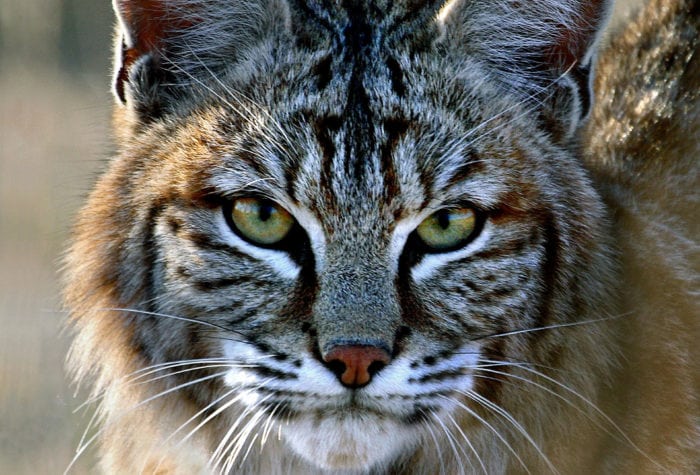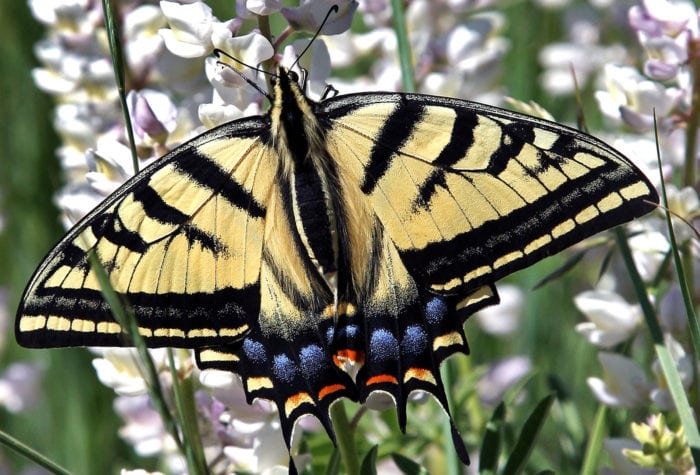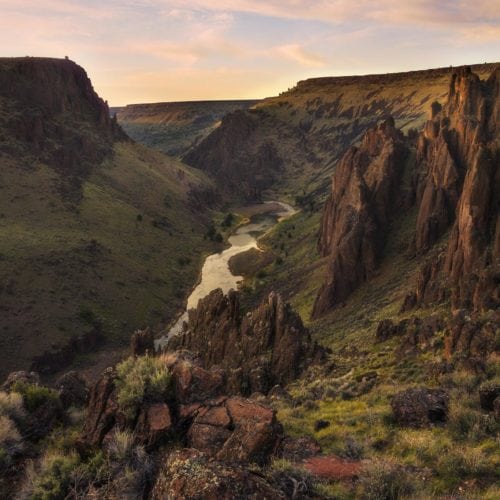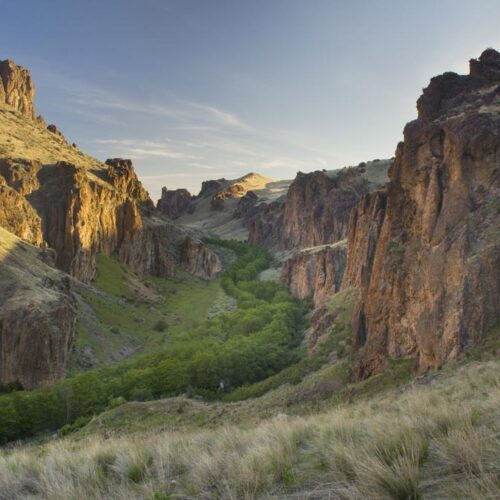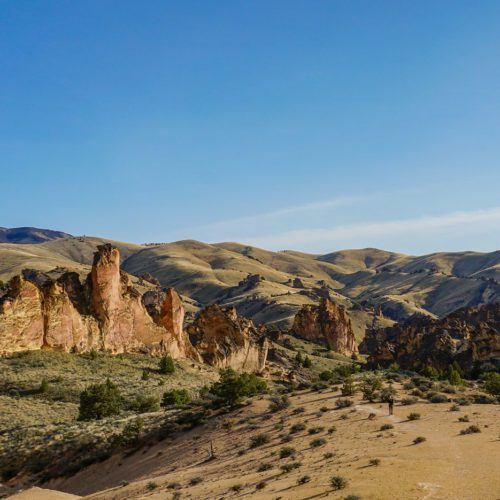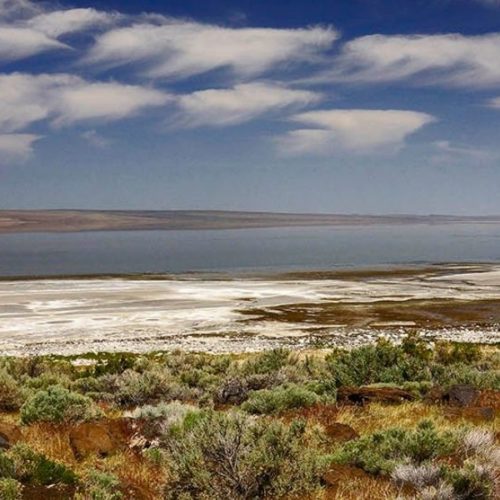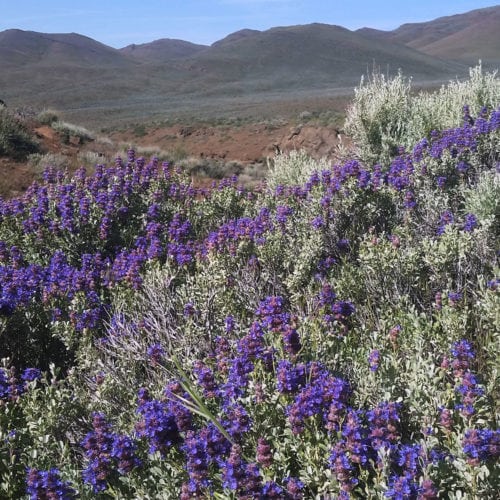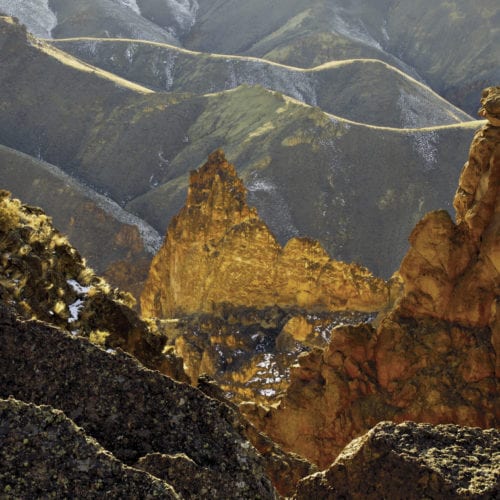Frequently Asked Questions: The Owyhee Canyonlands National Monument
Legislative protections, like those afforded to Steens Mountain, the Oregon Badlands, and Spring Basin in the John Day River Basin, are probably more familiar to Oregon high desert advocates than a Presidentially proclaimed national monument. Following, we share more detailed information about the proposed Owyhee Canyonlands National Monument.
First a disclaimer: Although ONDA and others are advocating for a national monument of a certain size and to be managed under certain management provisions, the decision ultimately lies with the President. Consequently, our explanations below are based on what we are advocating for and what we reasonably anticipate President Biden may decide to do if he establishes an Owyhee Canyonlands National Monument.
How big would the national monument be?
We are proposing that President designate a monument based on the same areas that Senators Ron Wyden and Jeff Merkley have mapped for their legislative conservation proposal created by local ranchers, conservation organizations, hunting and fishing groups, recreational interests, businesses and Tribal nations and representatives beginning in 2019. A copy of this map is available here.
Who would manage the national monument?
The Bureau of Land Management currently manages the Owyhee Canyonlands, and the agency would continue to manage the national monument.
How would the national monument be managed?
The President’s proclamation establishing the monument would include general direction for monument management. Following designation, the BLM would then develop a management plan to define more specifically how that direction would translate into day-to-day, on-the-ground administration of the monument. Like any other plan developed by the agency, the monument management plan would be crafted with extensive public involvement and consultation with Tribes and the state of Oregon, with multiple opportunities for public input. ONDA and many other organizations interested in the Owyhee Canyonlands and public lands management would be deeply involved in that process.
Would I be able to continue hunting and fishing in the national monument?
Yes. Hunting and fishing would continue to be managed by the state of Oregon (Oregon Department of Fish and Wildlife) just as those activities are today. And, just as today, both game and non-game wildlife would continue to be managed by the state of Oregon
Would water rights be affected by national monument designation?
No. Water rights would continue to be managed by the state of Oregon (Oregon Department of Water Resources) and would not be affected by monument establishment.
Would national monument designation affect non-federal land (e.g., private, state or county lands)?
No. The designation would apply only to federal lands included within the monument boundary so any non-federal lands, including inholdings, would not be affected by monument establishment.
Would national monument designation affect my ability to drive on existing roads?
The monument designation would not affect use of existing roads.
Would livestock grazing be allowed to continue in the national monument?
Yes. Domestic livestock grazing would be allowed to continue in the monument.
Would the national monument create new wilderness areas?
No. Wilderness can only be designated via an act of Congress.
Would the national monument affect potential lithium mining in southeastern Oregon?
No. The national monument would not include the McDermitt Caldera where companies have staked mining claims. Further, where valid existing mining claims pre-date the establishment of a monument, those claims are explicitly “grandfathered” into the designation. Provided that the existing claims in the McDermitt Caldera are valid, then they would not be affected even if the monument were to encompass that area.
Would the BLM be able to manage juniper and invasive weeds in the national monument?
Yes. The BLM already has the ability to manage juniper and invasive weeds across the entirety of BLM public lands in Malheur County, including Wilderness Study Areas, Lands with Wilderness Characteristics and other specially recognized areas. This authority would continue in a national monument.
How would fire be managed in the national monument?
One of the goals of invasive weed management would be to reduce the risk of unnatural fire. In addition, regardless of designation – as a monument, wilderness or anything else – the BLM would continue to have the authority to respond to emergencies as deemed appropriate by the Secretary of the Interior.
